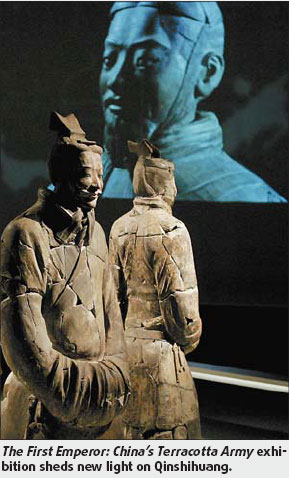Qinshihuang, First Emperor of the Qin Dynasty (221-206 BC), is a crucial figure in China's long history. In 221 BC he conquered the warring kingdoms to create an empire.
Although a controversial figure with a reputation for tyranny, he introduced a number of progressive changes that still live on, centuries later.
Currency, writing scripts, weights and measures were standardized and a centralized bureaucracy developed to administer the new country, representing a huge step toward the development of China as a nation.
Preparations for the construction of the First Emperor's tomb complex began shortly after he became King of Qin and were left uncompleted when he died. Although the tomb mound had long been visible above ground, the terracotta figures came as a surprise to all, when they were discovered by farmers while digging a well in 1974.
More than 7,000 life-size warriors, built out of terracotta and originally brightly painted, had been buried in battle formation in three pits along with their horses, wooden chariots and weapons.
The terracotta army was constructed to guard the emperor in the afterlife. But recent finds have proved that the First Emperor was as concerned with his civilian administration after death. In 1999, 11 terracotta acrobats and strongmen were found near the tomb mound; these were designed to entertain the emperor in the afterlife. Terracotta civil officials and scribes were found in October 2000, and a year later a bronze bird pit was discovered featuring life-size bronze geese, swans and cranes.
The First Emperor has been seen in both a positive and negative light throughout history and his legacy is still the subject of much debate. The limitations of historical sources for the First Emperor make the archaeological evidence from his tomb very important. These artifacts are tangible evidence of the First Emperor's existence, his great achievements and his vision.
In fact, they have ensured that he lives forever, although perhaps not quite as he had originally planned.
(China Daily September 14, 2007)


